The U.S.S. Olympia is one of the two surviving ships of the era of the vertical reciprocating steam engine. The Cruiser Olympia, launched in 1892, was one of the first naval ships to be built with these engines. As part of the new American steel Navy, the construction of the Olympia was authorized in 1888 as cruiser number 6. As part of a Congressionally-mandated program to establish complete domestic capability for warship construction, the ship's contract was awarded to the Union Iron Works of San Francisco.
1890-1899
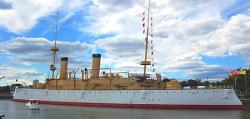
The Broadmoor Manitou and Pikes Peak Cog Railway (also known as the Pikes Peak Cog Railway) is a cog railway that climbs one of the most iconic mountains in the United States, Pikes Peak in Colorado. The base station is in Manitou Springs, near Colorado Springs.
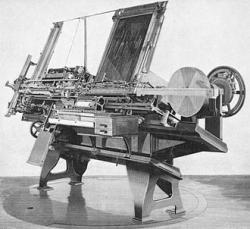
The Paige Compositor was an invention developed by James W. Paige (1842–1917) between 1872 and 1888. It was designed to replace the human typesetter of a lead type-composed printing form with a mechanical arm. In the early 1890s, a group of inventors signed a contract with Towner K.
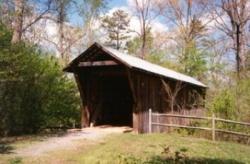
Bunker Hill Bridge is the only surviving Haupt truss bridge in the U.S. and one of only two surviving covered bridges in North Carolina. Patented in 1839, the Haupt truss featured diagonal braces spanning multiple panels, which was an attempt to eliminate the cross-strain found in lattice truss bridges. Although it was almost immediately eclipsed by the Howe truss and never reached the mainstream of covered bridge building, the Haupt truss is of interest for its association with Gen.

In 1894, Dr. John Harvey Kellogg and his brother, Will Keith (W.K.) Kellogg, were making a granola type cereal for their patients in the Battle Creek Sanitarium, a general health facility in Michigan. This granola cereal was made from wheat that was boiled, rolled into a sheet, toasted, and ground. They accidentally left a batch of boiled wheat stand overnight before passing it through the rolls. The individual grains were subsequently pressed into flakes which were toasted to form the first flaked cereal. Two years later, W.K. Kellogg made the first corn flakes.

Luebben Hay Baler - Historic Landmark of Agricultural Engineering. In 1892, Hugh Luebben from Sutton, Nebraska, with sons Melchior and Ummo built a mobile machine to produce round hay bales between two sets of rotating flat belts. They began manufacturing the baler in 1909 in Beatrice and later moved to Omaha, Nebraska. Allis-Chalmers purchased the patent in 1939 and eventually sold 77,200 "Roto-Balers." The Luebben baler made handling easier, improved hay quality, and reduced costs. The same basic design is used on modern large round balers.

In 1892, John H. Froehlich, Froehlich, IA, Mounted A Gasoline Fueled Internal Combustion Engine On A Traction Geared Frame And Used It To Power A Threshing Machine. A Change In Power Source Had Begun On North American Farms. In 1892, The Case Co., Racine, Wi, Built An Experimental Gas Traction Engine. In 1898 A Patent Was Issued To The Van Duzen Co. Cincinnati, OH, For A Gasoline Traction Engine. Huber Mnfg., Marion, Oh, Bought This Patent In 1898 And Produced 30 Prototype Units. In 1902, Hart-Parr, Founded By Charles W. Hart And Charles H.
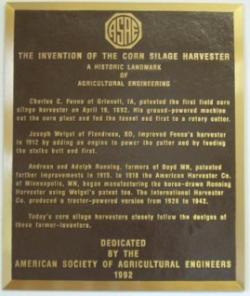
Charles C. Fenno Of Grinnell, Ia, Patented The First Field Corn Silage Harvester On April 19, 1892. His Ground-Powered Machine Cut The Corn Plant And Fed The Tassel End First To A Rotary Cutter. Joseph Weigel Of Flandreau, Sd, Improved Fenno's Harvester In 1912 By Adding An Engine To Power The Cutter And By Feeding The Stalks Butt End First. Andrean And Adolph Ronning, Farmers Of Boyd, Mn Patented Further Improvements In 1915. In 1918 The American Harvester Co. Of Minneapolis, Mn, Began Manufacturing The Horse-Drawn Ronning Harvester Using Weigel's Patent Too.
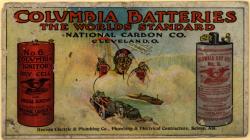
Imagine a world without batteries. It would be a much different world, in which the automobile and the telephone would have developed differently and probably later, a world without many of the conveniences of modern life and without some of the necessities. The battery, ever smaller and more powerful, defines much of our modern comforts and advances. There were many scientific and technological advances on the way to those smaller and more powerful batteries.
Sometime in 1894, while his Great Lakes steamer W. P. Thew lay tied to a Cuyahoga River wharf in northeast Ohio, 48-year-old Capt. Richard P. Thew, failed farmer and hardware salesman, observed a railroad steam shovel take one clumsy scoop of ore after another from the heap on the wood docks and dump them into a hopper car sitting on nearby railroad tracks. He noticed that the shovel bucket’s teeth gouged the dock’s timbers and left much of the ore behind.
Innovations
In his search for a more economical way to make aluminum, Canadian inventor Thomas Leopold Willson accidentally discovered the first commercially viable process for making calcium carbide, which is used for production of acetylene gas, at a location in North Carolina. This chance discovery…
Read MoreThis machine, which began operation on December 15, 1891, for the New York Edison Illuminating Company, represents the beginning of large-scale electric power generation in the United States. The generator was designed by chief engineer John Van Vleck, David Joy (known in England for his valve…
Read More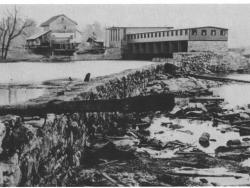
This run-of-the-river plant is a typical example of late nineteenth-century small-scale (750 kilowatt) low-head hydroelectric power technology. The Fries Manufacturing and Power Company began operating the Idol's Station on April 18, 1898, making it the first commercial hydroelectric plant in…
Read More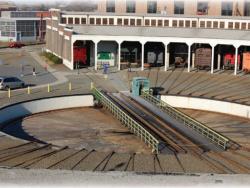
A majority of the buildings, used originally in steam locomotive repair and maintenance, are still intact, including the backshop (erecting shop), roundhouse, flue shop, paint shop, and parts storage buildings. The 37-stall roundhouse is one of the largest remaining roundhouses in North America…
Read More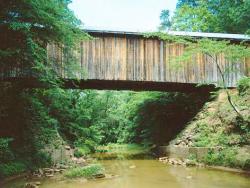
In 1894, Catawba County, North Carolina commissioners asked local landowners to build and maintain an 85-foot-long bridge across Lyles Creek. The community hired Andy L. Ramsour, who served as keeper of the Horseford covered bridge over the Catawba River in Hickory, North Carolina.
…
Read More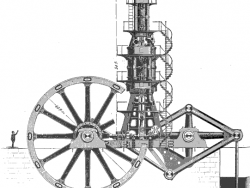
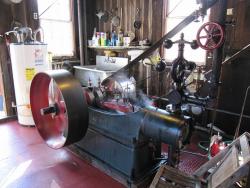
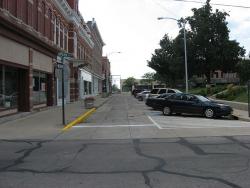
"This is the first Portland cement concrete street built in the United States ... Here started the better roads movement which has given our citizens from coast to coast swift and sure transportation."
- Historic marker, Bellefontaine, Ohio, celebrating the 50th anniversary of…
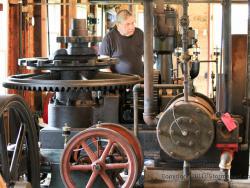
Early internal combustion engines produced only a few horsepower and were unable to replace steam engines in most applications until about 1890. By then, they were powerful enough for most portable or remote locations and many small manufactures. By 1900, they were replacing reciprocating steam…
Read More
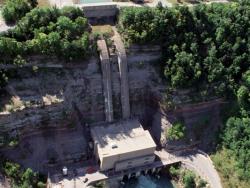
The Decew Falls Hydro-Electric Development was a pioneering project in the generation and transmission of electrical energy at higher voltages and at greater distances in Canada. On 25 August 1898 this station transmitted power at 22,500 Volts, 66 2/3 Hz, two-phase, a distance of 56 km to…
Read More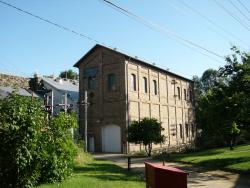
The historic Folsom Power House #1 marks one of the first successful uses of hydroelectric power in the world and the first successful transmission of power long distance (twenty-two miles to Sacramento). The old Folsom Power House still shelters the machinery generated to drive streetcars and…
Read More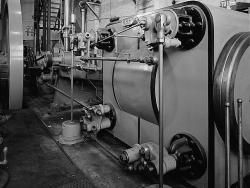
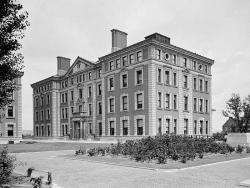
Havemeyer Hall was built between 1896 and 1898 under the leadership of Charles Frederick Chandler. It provided research and teaching facilities for faculty and students specializing in industrial, inorganic, organic, physical, and biological chemistry. Pioneering research done here led to the…
Read More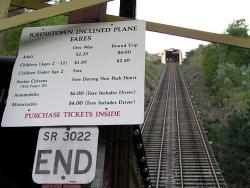
This is one of several, similar inclines built in western Pennsylvania during the late 19th century. It was designed by Samuel Diescher (1839-1915) after the great flood of 1889, to provide an efficient means of transportation between Westmont and the Conemaugh Valley. (See also the Monogahela…
Read More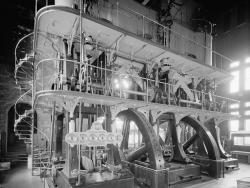
This machine is an unusual triple-expansion, three-crank rocker engine, which in its day was a high-capacity unit providing outstanding performance for the Boston Water Works Corporation. Designed by Erasmus Darwin Leavitt, Jr. (1836-1916), Engine No. 3 was installed in 1894 to a high-service…
Read More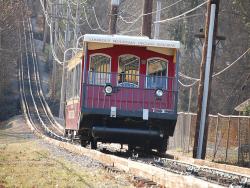
At the mountain where the Civil War's Battle Above the Clouds was waged, tourist business has thrived from the building of its first toll road (Whiteside Pike) in 1857 to present day.
More than 75,000 tourists a year were visiting the site when the war interceded. Tourism was not…
Read More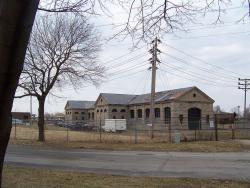
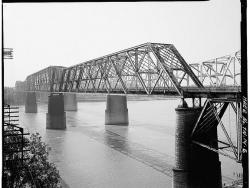
The Memphis Bridge (now called the Frisco Bridge) comprises three spans across the Mississippi River. With a main span measuring over 790 feet, it was one of the longest railroad bridges in the world upon completion. The renowned George Morison, after whom the bridge is unofficially named,…
Read More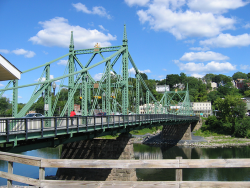
The crossing of the Delaware River at Easton, Pennsylvania, provided a central link in travel from the northeastern seaboard to America's inland territories throughout the 18th and early 19th centuries. From 1806 to the mid-1890s, travelers used a landmark wooden structure built by noted bridge-…
Read More

